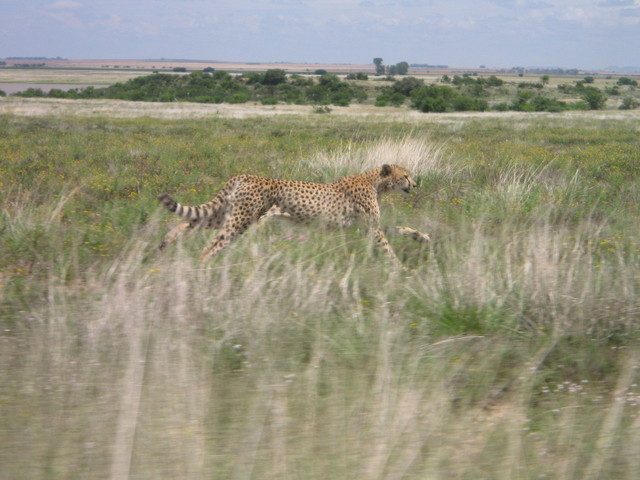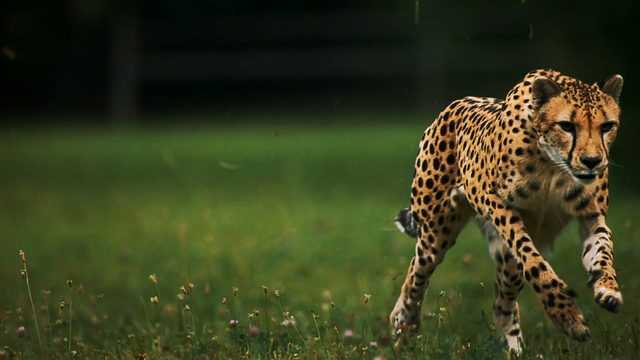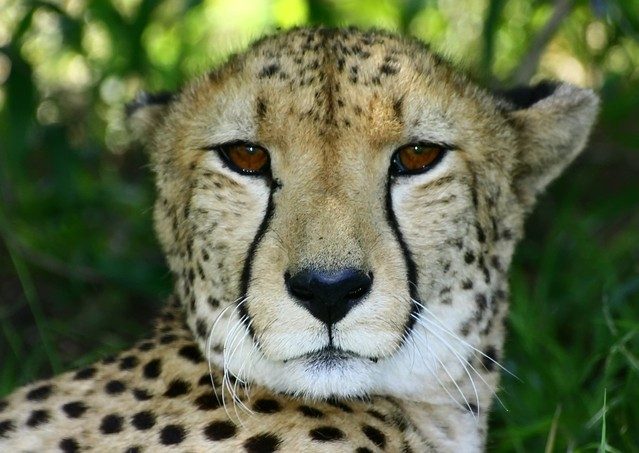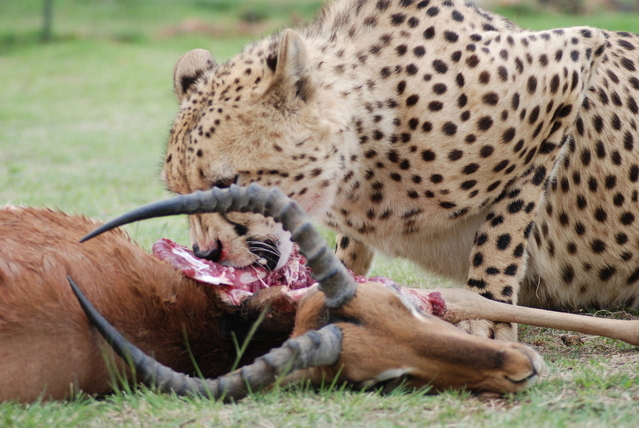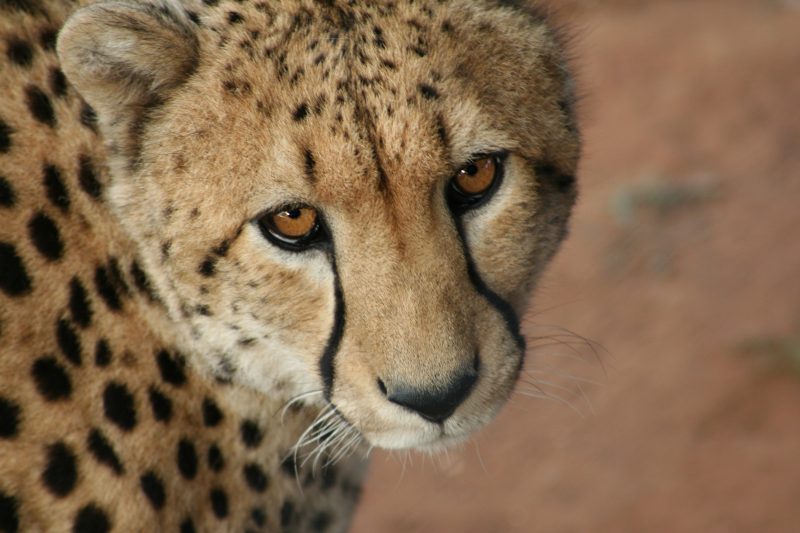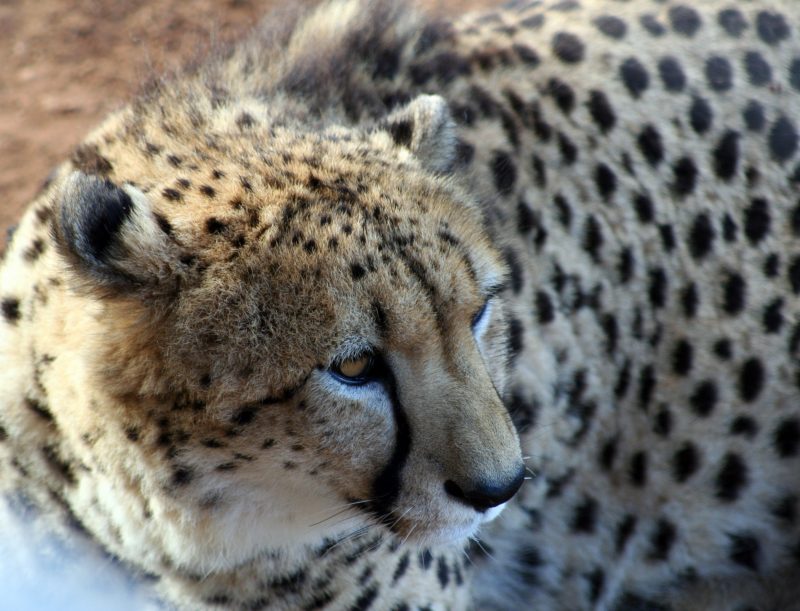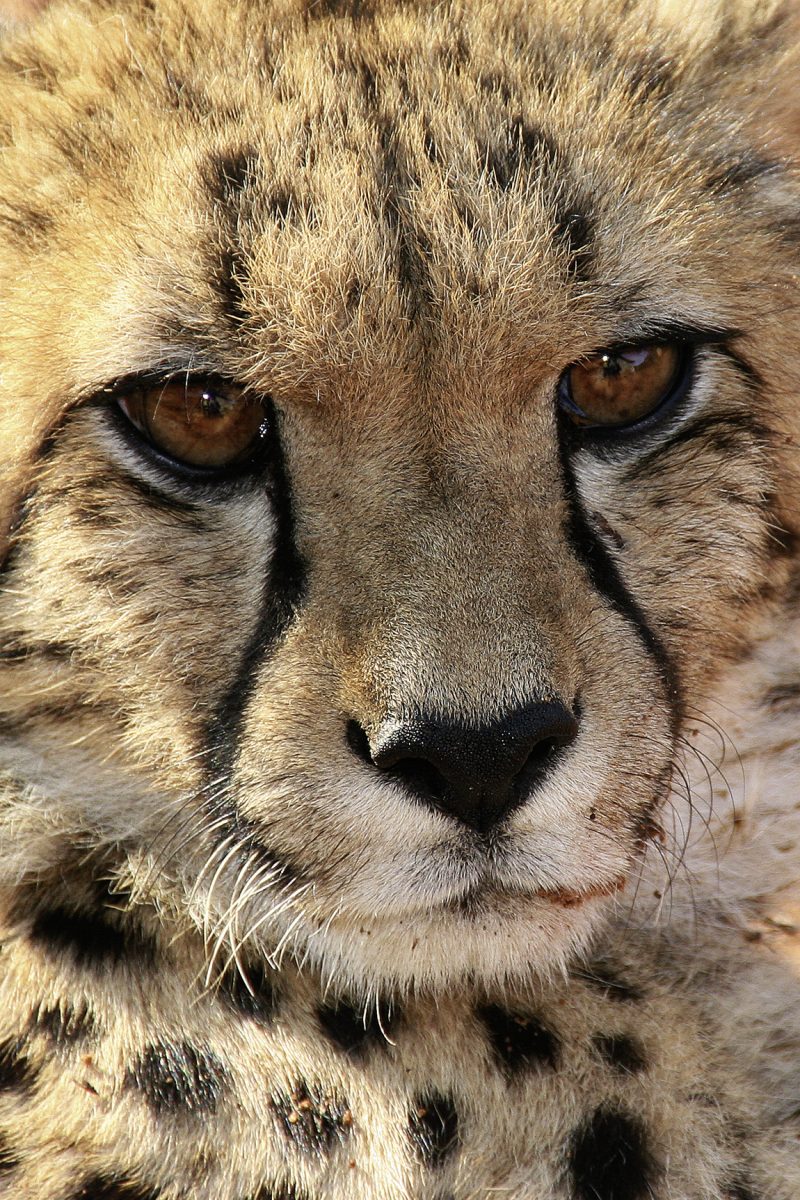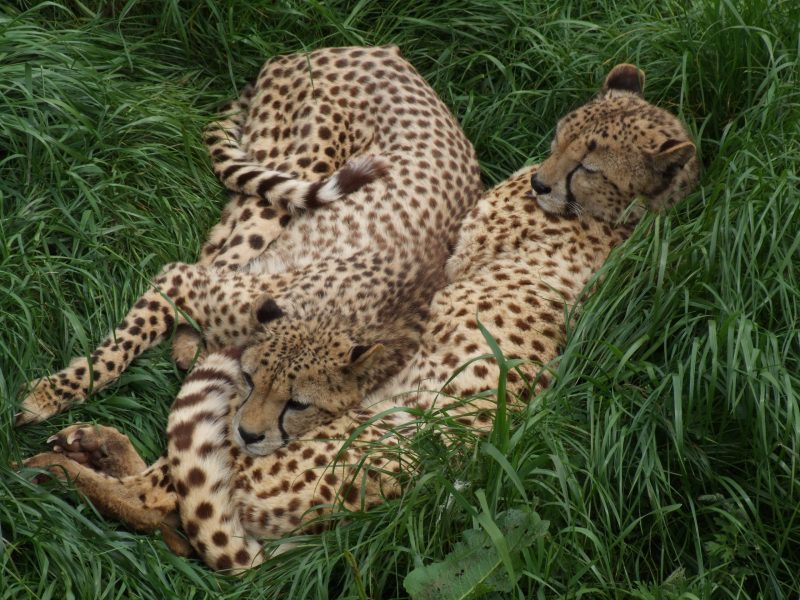The Speed Hunting Of Wild Cheetahs
Arunning cheetah at its top speed while on a wildlife safari in Kenya is not a rare sight. It is renowned for its incredible speed when in a chase but documentary-makers film cheetahs for the creature’s majesty, and underplay its speed. However, the BBC bucked the trend in its show The Hunt with aerial shots. The show revealed that the animal can reach top speeds in no time. In fact, within three seconds it can accelerate up to 60 to 75 miles per hour. That would cover a distance of 1,600 feet.
Sturdy physical characteristics
Most cheetahs weigh around 120 to 140 pounds with an average shoulder height of 35 inches. From head to rump they are 4.5 feet long, and their tails add an extra 31.5 inches. The cheetah’s slender body frame is both aerodynamic and lightweight. This physical feature along with its flexible spine, long thin legs, semi-retractable claws, and long tail makes it uniquely adapted for great strides allowing it to achieve the unbelievable top speed.
Slender body structure
The cheetah’s fluid body is full of very light bones. With broad chest, narrow waist, loose hip joints, and a slim well-muscled frame it can cover around 25 feet in one stroke. The shoulder blades are not attached to the collar bone. And, the hips pivot allowing the hind legs to stretch apart to the maximum possible when pulling the body.
Sprightly flexible spine
The extreme flexibility of the spine is unique making it agile and allowing it to sprint quickly. The spring-like spine gives extra reach and more extension to the long legs while running. The characteristics of the spine accompanied with its large liver and adrenals enable rapid response, which is imperative to accommodate its way of hunting.
Long thin legs
The cheetah’s specialized muscular rear legs mainly consist of twitch fibers to contract faster than normal and allow for a greater swing increasing acceleration. Its extra-large heart, oversized lungs, and wide nostrils process more oxygen for sprints.
Claws and pads
A cheetah has blunt semi-retractable claws and tough pads on its feet, that closely resemble that of a dog, designed to dig into the ground to have a good grip on the grass floor at high speed. These features offer the best traction to get to high speeds.
Fine stabilizing tail
The ringed markings along the long thick tail end in a bushy white or black tipped tuft for a streamlined appearance. This long tail is a finely-tuned balancing aid. It acts as a rudder, stabilizing, and helping it to counter balance its body weight while making those sudden sharp turns while in pursuit or changing direction quickly during a sprint. The tail is also a signaling device, helping the cubs follow their mothers in high grass.
Far reaching stride
It is astonishing to see how even when the cat is forced to slow down, it manages to regain ground in just a handful of strides. A stride is a distance between two successive imprints of the paw. There are two times in a single stride when its body is completely off the ground and up in the air. Once with all four of the legs extended and once with all of them bunched under the body. The unique features of the cheetah enable it to achieve strides of up to 8 meters with four strides completed in a second which is more than a horse’s. The horse can be easily outrun by a cheetah. But this will not last long because while running, the cheetah usually pants heavily and its body temperature reaches 105 degrees Fahrenheit. As such, it can only keep up its top speed for just a few minutes before tiring quickly. The sprints rarely arrive at a full minute but only last for 20 seconds. Therefore, the horse would eventually win in the long run.
Speed aids hunting
The cheetah utilizes its speed for hunting its prey, which lasts from 20 to 60 seconds. Although it is skilled in hunting its prey, only half of the chases are successful. It tends to lose them to other predators and sprints away from danger instead of injuring itself. The other half are life lessons learned the hard way.
Eyes for hunting
The feral cat is unique among the felines primarily because it is most active during the day. It is diurnal with poor night vision, unlike lions or hyenas, but have exceptional eyesight during the day. So, it prefers to hunt through the daytime hours, mostly either during the early evening or late morning. The binocular vision is a crucial asset in efficient and fruitful hunting since a cheetah relies on sight to hunt and not on the scent. The eye’s retinal fovea gives a wide-angled and sharp view. Cheetah is a solitary hunter. It perches upon a rocky ledge or a fallen tree to scope out the potential prey and its surroundings. The high set eyes on the cheetah’s small head along with the short-rounded ears aid them when surveying the grasslands for possible prey. It targets an animal that has strayed, not necessarily the old or weak.
Way of hunting
Cheetahs camouflage themselves against the tall grasses while stalking the prey until they are confident of the attack. Then it quietly sneaks up on its prey and leaps out using its tail as a rudder. It then knocks its prey to the ground. Usually, large wild cats go for the throat straight away in a pursuit. Instead, a cheetah, using its paw, kills it with a suffocating bite on the neck, holding it for as long as 25 minutes. Soon after the prey dies, the cheetah must devour it lest it loses it to other bigger or more aggressive animals such as lions, leopards, or hyenas. But it cannot eat its prey right away because by the time it finishes the kill, it is immensely hot from the chase and requires time, as long as a half hour, to cool down before it can feast.
The cheetah’s heart rate after a chase is 250 beats per minute, and the breaths are 200 per minute in contrast to while it’s resting when its heart beats are approximately 170 per minute and breaths are 30 per minute. So, the cheetah drags it to a hiding spot. Hiding the kill this way sometimes does not work, as vultures and other scavengers can often steal the food. When done resting it will quickly eat, as it cannot defend the food for a long time. As its food intake is enormous, the cheetah can gulp up the meat of the entire animal in just one sitting. Cheetahs are among the very few wild animals who are seen during a wildlife safari in Kenya eating prey that they have killed recently.
5 Frequently Asked questions About Cheetahs Hunting
To receive a colourful digibook about cheetah with videos, images and text, please fill out the following form or simply email us on safaris@safari-center.com

